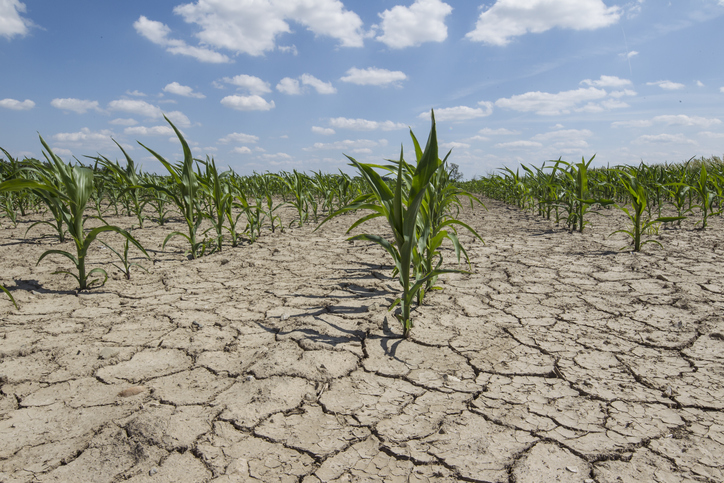Perhaps Eastern Washington farmers should steal an idea from the Ivy League. When sending students overseas, Princeton University provides students with a handout for the “Four Common Stages of Cultural Adjustment.” After reading the discussion of dryland agriculture in the ECONorthwest study advocating destruction of the Snake River Dams, the authors would benefit from some cultural exchange.
The recently released Lower Snake River Dams: Economic Tradeoffs of Removal study highlights the fundamental misunderstanding of agriculture in Western Washington and ignores contextual cues associated with the region affected by the recommendations and the socio-economic shifts being suggested.
“The high rate of non-irrigated farming in the area suggests such practices are a reasonable choice for farmers” (Lower Snake River Dams: Economic Tradeoffs of Removal, pg. v). This claim betrays a fundamental lack of understanding of farming in Washington.
The assumption that famers can easily switch between irrigated and dryland farming demonstrates a fundamental lack of understanding about the economics of Washington crops.
There are 14,700,000 acres farmed in Washington state. The U.S. Department of Agriculture 2017 Census of Agriculture shows there are 6.4 million acres of irrigated farmland and an additional 10,000 acres dedicated to other irrigated agricultural land uses. The counties included in the ECONorthwest study – Adams, Asotin, Benton, Columbia, Franklin, Garfield, Walla Walla, Whitman – account for 4,975,510 acres, or 33 percent, of the total farmland in our state.
Whitman County boasts the largest amount of farmland acres in the study with 1.2 million, and has developed into the breadbasket of our state while remaining a largely dryland farming area. Whitman County leads the state in grain production with approximately $259 million in sales recorded in the 2017 Census of Agriculture.
Benton County has half as many acres devoted to farmland, with 613,000, but leads the state in production of some of Washington’s most irrigation-dependent crops – vegetables, melons, potatoes, and sweet potatoes and generated just over $1 billion in sales in 2017. Despite having half the acreage, the bounty of Benton County is more valuable than that of Whitman County, simply because it has more irrigated land.
Irrigation water in agriculture is extremely valuable. As demonstrated by the difference in revenue between Whitman and Benton counties, the assertion by this study that “dryland farming is economically feasible in the region” does not mean that it is the most effective means for all farmers in the region to operate their businesses.
Additionally, the study cites 198,227 acres of “non-irrigated cereal grains cultivated within a five-mile radius of the Lower Snake River Dams area. The ubiquitous nature of the number of acres of non-irrigated cereal grains in the region, does not necessarily indicate a positive economic correlation to dry land farming. Referring back to the difference between Whitman and Benton counties, Whitman County, where non-irrigated cereal grains drive the agricultural economy, the average size of a farm is approximately 1,200 acres. In comparison, in Benton County, where heavily irrigated crops provide nearly five times as much income, farms are approximately 400 acres in size.
While farmers are a savvy and adaptable people, what the Lower Snake River Dams: Economic Tradeoffs of Removalstudy fails to take into account is that each section of Southeast Washington has its own unique challenges, essentially making each county a region unto itself. As evidenced by the differences between Whitman and Benton counties, a one size fits all approach to agriculture in that region of the state, as recommended by the study will have rippling consequences that have not been adequately accounted for.
“Outside forces that can change the operation of agriculture in the region, be it government regulation or changing weather patterns that affect stream levels and seasonality, are perceived as threats to a way of life and livelihood,” (Lower Snake River Dams: Economic Tradeoffs of Removal,pg. 27).
Socio-economics are hard to overcome because the intersection of social and economic behavior in agriculture is the basis of the farm. In rural communities, farms and the businesses that support them are interconnected both socially and economically. While farms are businesses, they are also part of a larger social ecosystem that supports the underpinnings of the communities in which they thrive.
For example, in Garfield and Columbia counties, farmers represent a significant portion of the population (17 and 10 percent respectively), according to the 2017 USDA Census of Agriculture county profiles. By failing to understand the fabric of these communities, the study fails to appreciate the interconnectivity of the agricultural network that exists in the communities there as well as those in the other counties included in the study.
What conversion in crops represents is not just a change in crops for the farmers producing them, it is a conversion in community structure. A farmer who has typically grown an irrigated crop like tree fruit, who may have to convert to a dry land grain crop like wheat is facing a complete change in business structure. After removal of all the fruit trees, the farmer will face the purchase of a complete suite of new farm equipment, with costs totaling nearly $1 million. The grower will also have to seek out new relationships for the purchase of the grain product while severing relationships with previous purchasers, learning new growing and harvesting techniques, and determining new storage, shipping, and retail routes.
Agriculture is a business of relationships built over time. It is not easy or efficient to move from one product to the next without substantial inputs from farmers. Unlike the trial-and-error in an urban garden plot, large-scale agriculture requires years of effective relationship-building and learning about the growth patterns and rates of each crop to the best advantage of the grower.
Our state did not become a competitor in the global agricultural sector by putting the “way of life and livelihood” of our farmers aside as a footnote in a study about removing a critical source of water flow management and irrigation water distribution. Surface water was prioritized as an essential tool for our agrarian forebears to create a Washington that could support itself.
Farmers in our state use surface water responsibly to make use of the open land in Eastern Washington. Our state ranks No. 11 in the United States in agricultural production, competing against a few states with growing seasons considerably longer and with climates that offer more crop diversity.
“ … the cost to augment irrigation infrastructure following removal is relatively minor and does not serve as a driving determinant of whether the dams should be removed” (Lower Snake River Dams: Economic Tradeoffs of Removal, pg. 136).
Prioritization of surface water for agricultural irrigation has spurred Eastern Washington into action during the past decade to alleviate the drawdown of the Odessa Subarea Aquifer through a project by the Washington State Department of Ecology, the U.S. Bureau of Reclamation, and the East Columbia Basin Irrigation District. The project, known as the Odessa Groundwater Replacement Program, is designed to join new and existing public infrastructure to deliver irrigation water to land that has been irrigated using well water since the 1970s.
Original estimates for that project were developed in 2013. At the time, infrastructure cost estimates to deliver water through a closed pipe system were $200 million. Since then, that estimate has continued to climb with approximately $100 million being spent already. In a recent news article, the irrigation district calls that number much “too low” just six years later.
Remarkably, the ECONorthwest authors used data from 1999 to recommend infrastructure could be replaced for $165 million. It is absolutely absurd for this study to claim 20-year-old data is sufficient to determine the costs of building replacement infrastructure after the removal of the Lower Snake River Dams.
The study also notes researchers received no response from farmers in the study area. So, in addition to using outdated data for their infrastructure cost estimates, study authors have no input from residents with first-hand knowledge of the current agricultural conditions in Southeast Washington. Yet, they are comfortable recommending a complete restructuring of their entire business and personal lives.
While the study suggests adaption and socio-economic changes will be enough to get agricultural communities through the potential removal of the Lower Snake River dams, it does not take into account the scarcity of the resource nor does it consider the experiences being had in other irrigation projects, the knowledge of local residents, or the potential damage to the state’s overall economy.
Southeastern Washington farmers deserve to be part of the discussion about what happens to their “way of life and livelihood” without being treated as though they are backward for wanting to preserve what they have. For some, that is a generations-long legacy of working the land to the best of their ability in an effort to survive. In 1862, George Pangburn squatted on land in what is now Whitman County, hoping to eke out a living farming and raising pigs.
157 years later, the farmers of the Palouse still want to do the same thing.






